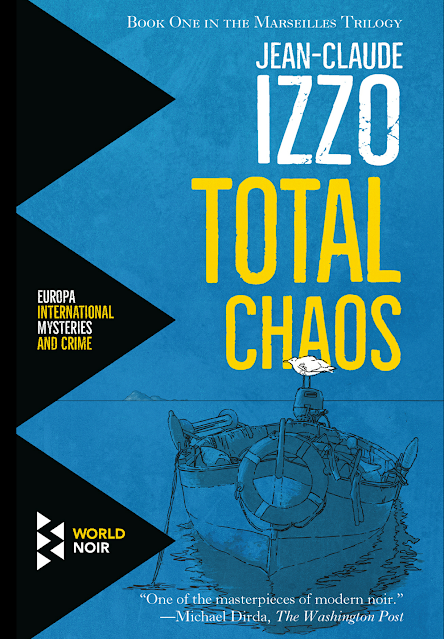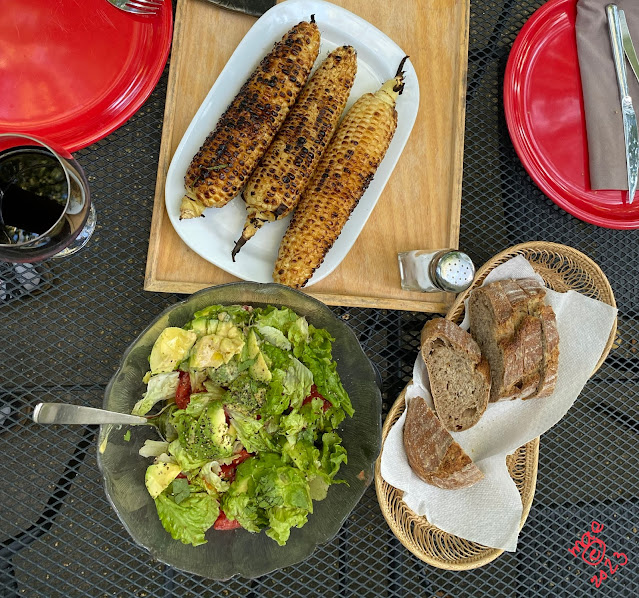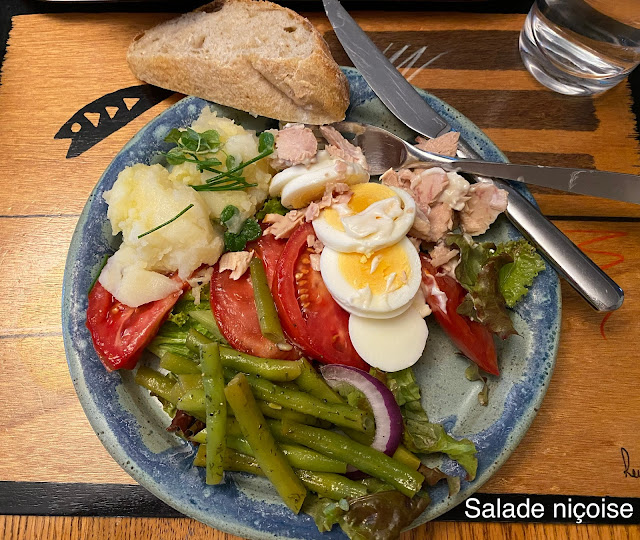 |
| Total Chaos by Jean-Claude Izzo (1945-2000) |
You couldn't imagine a less cozy mystery than this graphically violent police story about Marseilles around 30 years ago. Jean-Claude Izzo's
Total Chaos (written in 1995) is dark and often ugly with lots of underworld characters from all the ethnic and social strata of the Marseilles underground and police force. It's narrated by a policeman named Fabio Montale, a native of the city. Unlike him, his friends, both alive and dead, are mainly petty criminals and hookers. His enemies are gangsters and maybe some of his fellow policemen. The plot centers on the deaths of his two best friends and a young woman, and his efforts to discover who killed them, and maybe get some revenge.
I didn't like the book at all: just not my kind of literature. However, one feature of this novel did appeal to me very much: between the scenes of unpleasant violence and the depiction of unsavory characters, Fabio's narrative is full of very savory food descriptions. Food here is totally central to the essence of the main character/narrator and his milieu. You could almost cook following his descriptions: in fact, if you were familiar with the local cuisine, you probably could use them as recipes.
Since I'm not fond of novels with this much graphic violence, I'll just quote a few of the amazing food descriptions.
First, here is Fabio's childhood memory of his family dining table:
"The whole family used to come here on Saturdays. There’d be big plates of pasta in sauce, with headless larks and meatballs cooked in the same sauce. The smells of tomatoes, basil, thyme, and bay filled the rooms. Bottles of rosé wine did the rounds amid much laughter." (p. 38).
Next, his friend Honorine makes Fabio some food to take on his boat:
"I made you some foccaccia, Honorine had written on a little piece of paper. Foccaccia is made with pizza dough, filled with whatever you like, and served hot. Tonight, the filling was cured ham and mozzarella." (p. 44).
And Honorine cooks another dish:
"Honorine made stuffed peppers like no one else could. Romanian style, she called it. She’d fill the peppers with a stuffing of rice, sausage meat and a little beef, well salted and peppered, then place them in an earthenware casserole and cover them with water, add tomato coulis, thyme, bay and saw-wort, and let them cook on a very low flame, without covering. They tasted wonderful, especially if you poured a spoonful of crème fraîche over them at the last moment." (p. 161).
Another Marseilles specialty, by Céleste, another friend:
"Céleste made better aïoli than anyone I knew, except Honorine. The cod was desalted just right, which is rare. Most people leave it to soak for too long, and give it only two soakings. It was best to soak it several times. Eight hours the first time, then three times two hours. It was also a good idea to poach it in simmering water, with fennel and pepper grains. Céleste also used a particular olive oil to give the aïoli a ‘lift.’ .... Her salads always tasted different." (p. 194).
Fabio's colleague Pérol supplies some provisions:
"Pérol had brought beer and sandwiches. Tomatoes, anchovies and tuna. Not so easy to eat, but better than the usual revolting ham sandwiches." (p. 139).
Simple foods reflect the Marseilles atmosphere throughout the novel.A meal with a friend at a place called Chez Mario:.
"Mozzarella and tomatoes, with capers, anchovies and black olives, for starters. Spaghetti with clams as a main dish. Tiramisu for dessert. To drink, a Bandol, from the Pibarnon vineyards." (p. 75).
Besides the tastes and preparations, there is also frequently a memory of aromas:
"On Rue Longue-des-Capucins, the market was in full swing. Smells of coriander, cumin, curry, mint. The East. I turned right, through the Halle Delacroix, went into a bistro and ordered a double espresso and a few slices of bread and butter." (p. 79).
Sometimes Fabio himself prepares the meal:
"I’d started cooking early in the morning, listening to old blues songs by Lightnin’ Hopkins. After washing the bass, I’d filled it with fennel, then drizzled olive oil over it. Then I made the lasagne sauce. The rest of the fennel had simmered gently in salt water, with a touch of butter. In a well-oiled pan, I gently fried slivers of onion, garlic and finely chopped pepper. A spoonful of vinegar soup, then I added tomatoes that I’d cut into little cubes and plunged in boiling water. When the water evaporated, I added the fennel." (p. 100).
To wrap up...
In contrast to Izzo's very hard-boiled crime stories is the genre of cozy mysteries. These were just becoming popular in the 1990s when Izzo's Marseilles novels were written. The cozy mystery genre in fact was initially developed as a reaction against noir tales like this. The main focus of cozy novels is the food (cute little lady detectives in cozy mysteries are often owners of food establishments), but I think Izzo's food is much more fascinating and appealing. The meals served in a lot of cozy mysteries probably wouldn't be as delicious as Fabio's dishes.
If you like your police tales noir and graphic, you should read this book. I prefer my crime fiction to be somewhere in the middle, not cutesy-cozy and not ultra-violent. I like quite a few authors of this in-between style. such as Donna Leon, Martin Walker, Tony or Anne Hillerman, Elly Griffiths, Sujata Massey, Robert Parker, and quite a few others. Total Chaos is the first volume of a trilogy, but I don't think I'll be reading the other two volumes.
Blog post © 2023 mae sander




















































